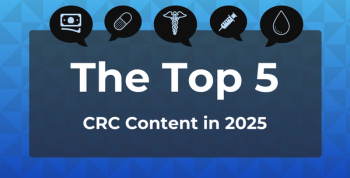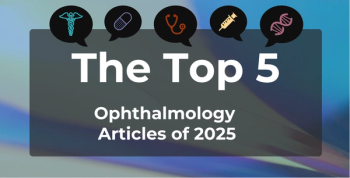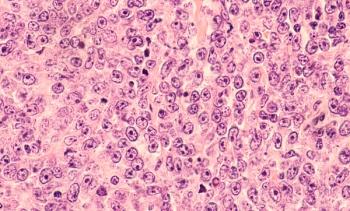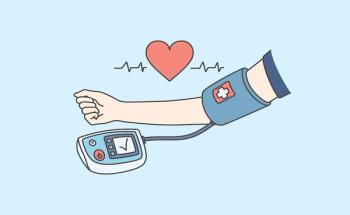
Delayed Hypertension Diagnosis Tied to Higher Cardiovascular Risk, Lower Treatment Rates
Key Takeaways
- Diagnostic delays in hypertension lead to lower treatment rates and increased cardiovascular risk, with prescription rates decreasing as delays lengthen.
- Delayed diagnoses correlate with a higher risk of major cardiovascular events, consistent across age, sex, and racial/ethnic groups.
Researchers found a 30% increased risk of cardiovascular events in patients whose diagnosis was delayed by more than a year after an elevated blood pressure reading.
Diagnostic delays for hypertension are associated with significantly lower treatment rates and increased long-term
Researchers used electronic health record (EHR) data to identify patients with at least 2 blood pressure (BP) readings of 140/90 mm Hg or higher recorded at least 30 days apart between 2010 and 2021. These patients met the criteria for a “computed hypertension diagnosis” but experienced varying times to formal clinical diagnosis by a provider. The findings were published in
Delayed Diagnosis, Delayed Treatment
Among the 311,743 patients included, 14.6% received a clinical hypertension diagnosis more than 30 days after their second elevated BP reading. Compared with those whose hypertension was diagnosed between their first and second BP reading, patients with delayed diagnoses were far less likely to receive antihypertensive medications within 30 days (30.6% vs 75.2%; P < .001).
Prescription rates decreased progressively with longer diagnostic delays. Just 26.4% of those diagnosed more than 365 days after the second BP reading received treatment, compared with 54.5% for delays up to 90 days.
These delays had consequences, according to the authors. Over a 5-year follow-up period, the risk of major cardiovascular events—including heart failure hospitalization, ischemic stroke, or heart attack—rose in tandem with diagnostic delay. Compared with timely diagnoses, delayed diagnoses were tied to a:
- 4% increased risk for delays up to 90 days
- 11% increased risk for delays of 91 to 365 days
- 29% for delays over 365 days
Subgroup analyses in the current study confirmed that the association between delayed diagnosis and worse outcomes held across age, sex, and racial/ethnic groups.
The nearly 30% higher risk of cardiovascular events for patients receiving a diagnosis more than a year late is consistent with previous findings, according to the authors. For example, a
Not Due to Patient Disengagement
Importantly, patients with delayed diagnoses were not disengaged from care.1 They had a similar number of outpatient visits prior to the second elevated BP reading and often had substantial continued interaction with the health system afterward, according to the study. In fact, longer delays were associated with more follow-up visits, suggesting missed opportunities rather than a lack of access.
At the same time, there are other factors to consider, as some diagnostic delays could stem from appropriate clinical caution. For example, clinicians might hesitate to diagnose hypertension after a single high reading due to concerns about white-coat hypertension or temporary spikes caused by something as simple as a cup of coffee. Additionally, current guidelines—
“However, the consistently lower rates of antihypertensive medication prescriptions among patients with delayed diagnoses suggest that clinical caution alone does not fully account for the observed delays,” the authors added.1
They also observed longer diagnostic delays for younger adults, women, Black patients, and Asian patients, which may reflect underlying disparities in care due to implicit bias or differences in patient-clinician communication styles or symptom presentation.
Advocating for EHR-Based Tools
The authors said these findings underscore the need for changes in hypertension detection, advocating for EHR-based clinical decision support tools to identify patients with elevated BP who meet diagnostic criteria, allowing clinicians to act in real time. Incorporating nonphysician health professionals into care teams could also improve hypertension detection and management. Meanwhile, pharmacists can lead BP screenings, adjust medications, and educate patients, especially in outpatient or community settings; nurses can assist with BP rechecks, education, and referrals for diagnostic confirmation.
“Embedding team-based care models within primary care practices may help distribute the workload and ensure that patients meeting hypertension criteria receive timely evaluation and diagnosis,” the authors said.
References
- Lu Y, Brush JE, Kim C, et al. Delayed hypertension diagnosis and its association with cardiovascular treatment and outcomes. JAMA Netw Open. 2025;8(7):e2520498. doi:10.1001/jamanetworkopen.2025.20498
- Xu W, Goldberg SI, Shubina M, Turchin A. Optimal systolic blood pressure target, time to intensification, and time to follow-up in treatment of hypertension: population based retrospective cohort study. BMJ. 2015;350 (8):h158. doi:10.1136/bmj.h158
- Whelton PK, Carey RM, Aronow WS, et al. 2017 ACC/AHA/AAPA/ABC/ACPM/AGS/APhA/ASH/ASPC/NMA/PCNA guideline for the prevention, detection, evaluation, and management of high blood pressure in adults: a report of the American College of Cardiology/American Heart Association task force on clinical practice guidelines. J Am Coll Cardiol. 2018;71(19):e127-e248. doi:10.1016/j.jacc.2017.11.006
Newsletter
Stay ahead of policy, cost, and value—subscribe to AJMC for expert insights at the intersection of clinical care and health economics.







































